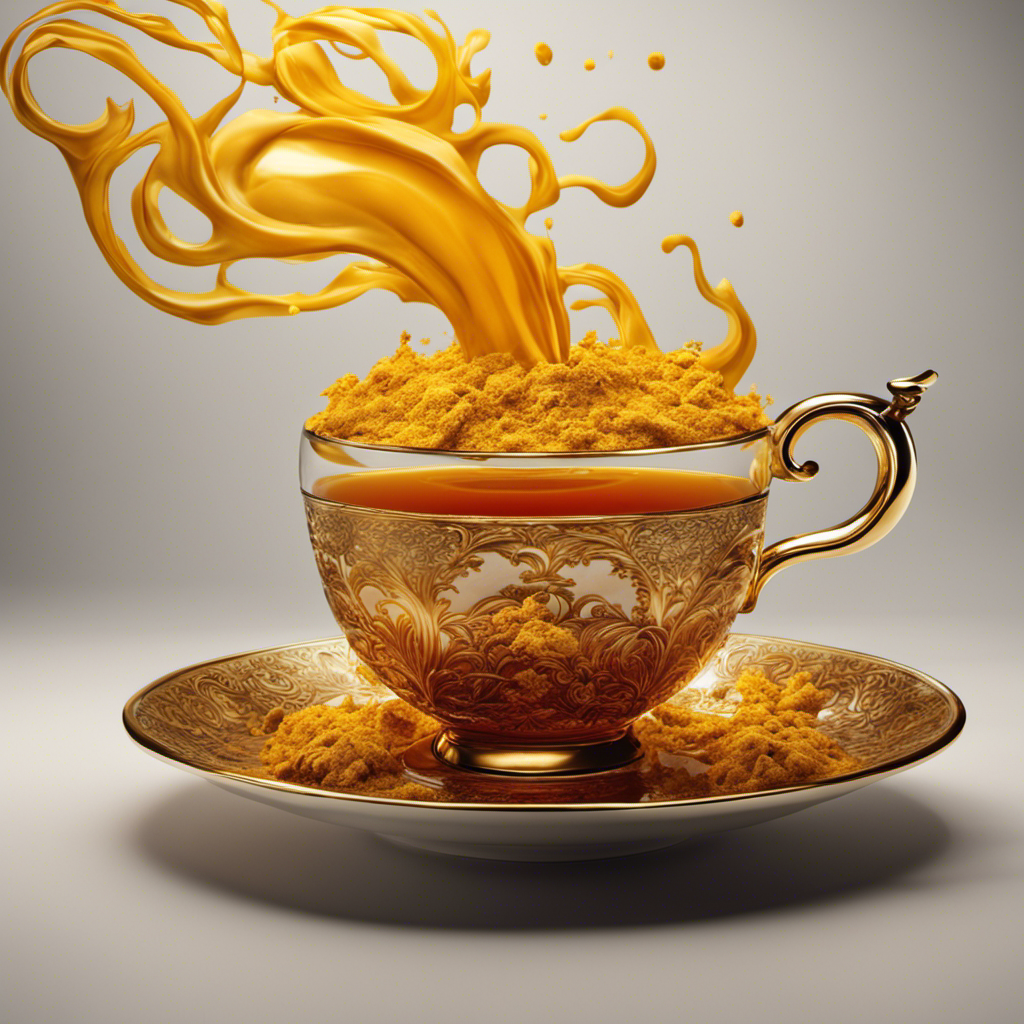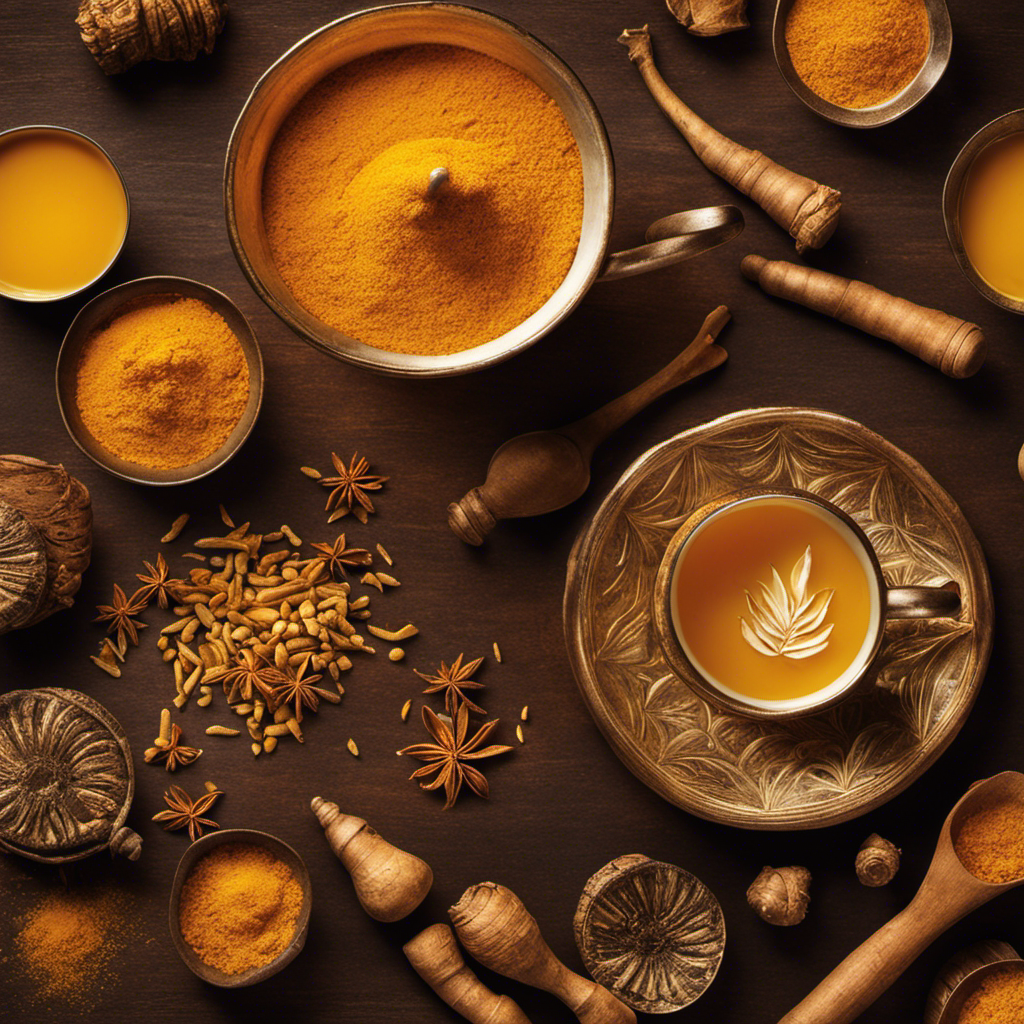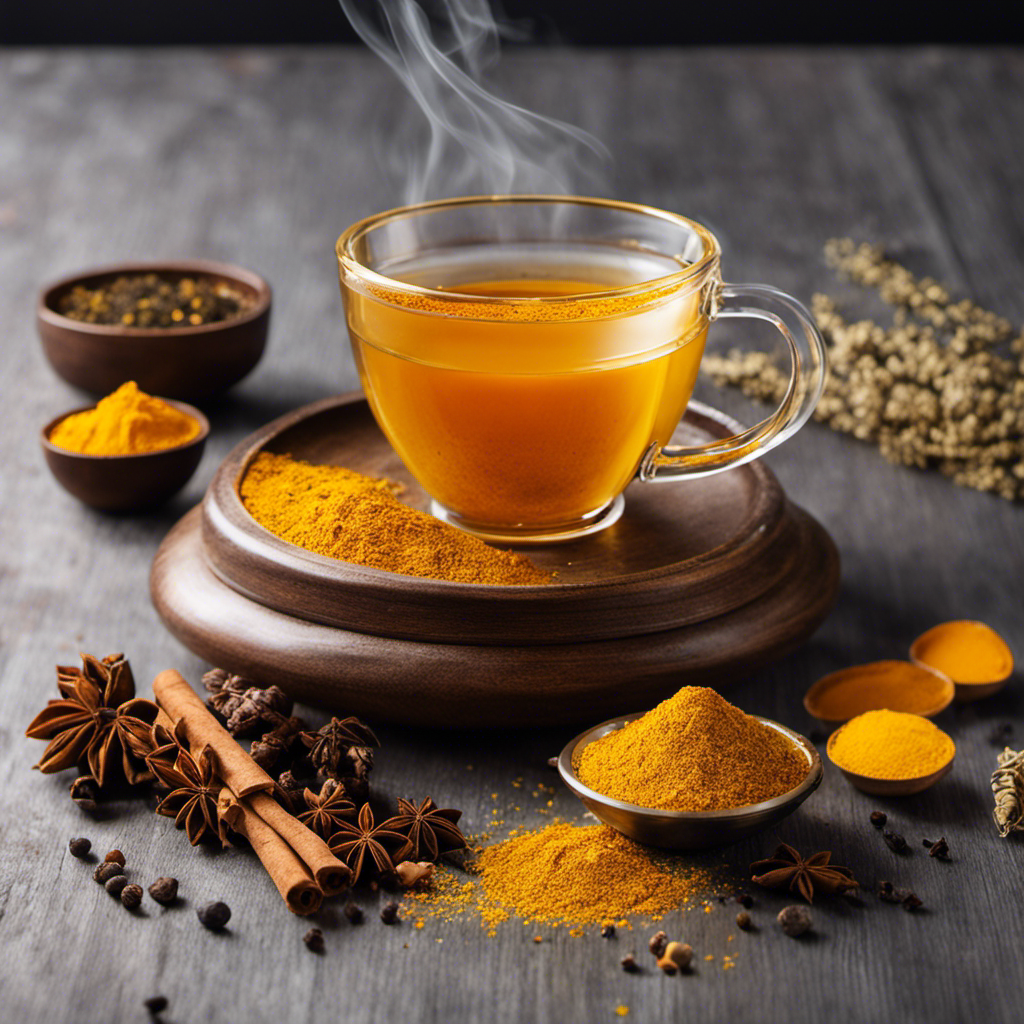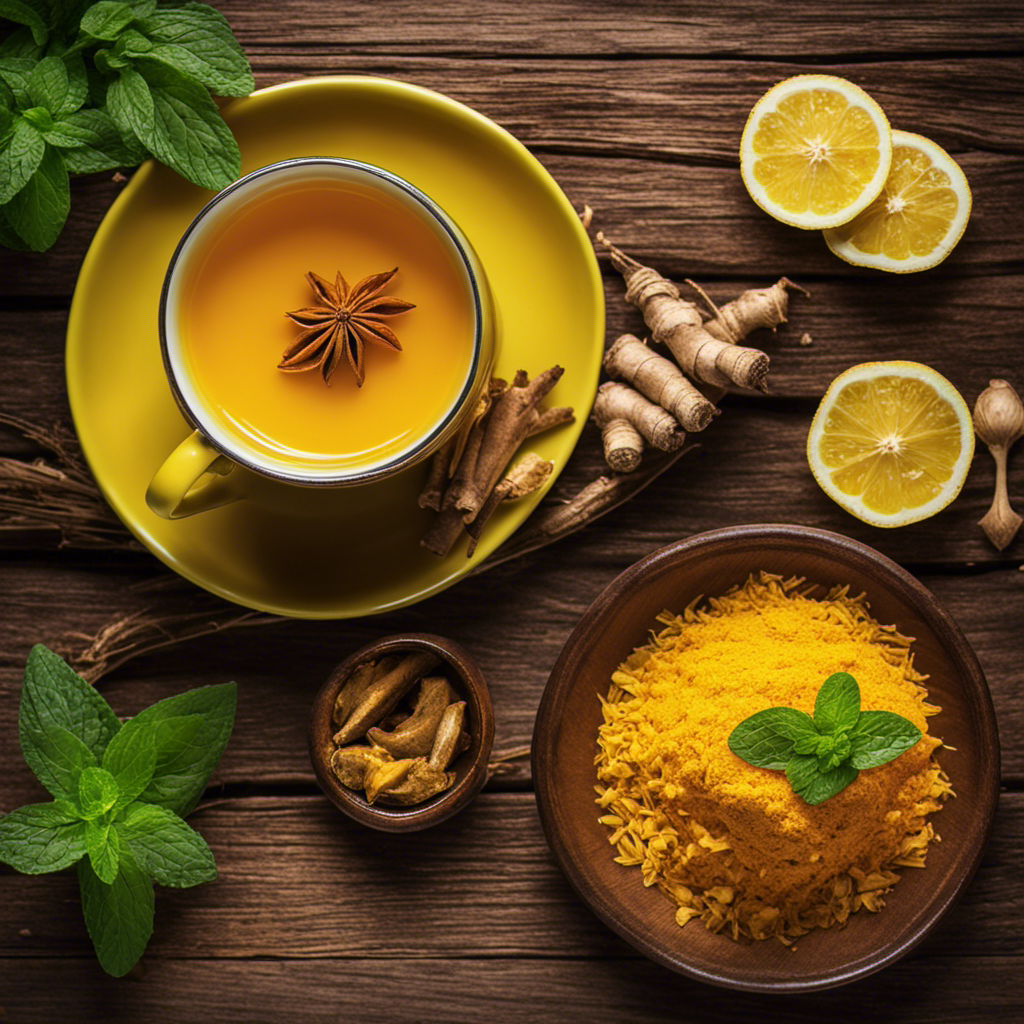Matcha
Matcha Sugar Content Explored: Does Matcha Have Sugar?

Are you a fan of matcha but worried about its sugar content? Well, fear not, because we’re here to serve you all the facts! When it comes to matcha, we know how important it is to keep sugar in check.
That’s why we’re here to answer the burning question: does matcha have sugar? Brace yourself, because the truth might surprise you.
In this guide, we’ll delve into the world of matcha and uncover the truth about its sugar content. So sit back, relax, and let us serve you the knowledge you need to make informed choices about your favorite green tea powder.
Key Takeaways
- Matcha traditionally does not contain any added sugars.
- Matcha has a natural sweetness that comes from the tea leaves themselves.
- Added sugars can significantly alter the nutritional profile of matcha and diminish its health benefits.
- Matcha can be incorporated into a low-sugar diet by using alternative sweeteners and trying sugar-free matcha recipes.
What Is Matcha
Matcha is a powdered form of green tea, made by grinding shade-grown tea leaves into a fine powder. It originated in China but is more commonly associated with Japanese tea ceremonies. Matcha has gained popularity worldwide due to its numerous health benefits and unique flavor profile.
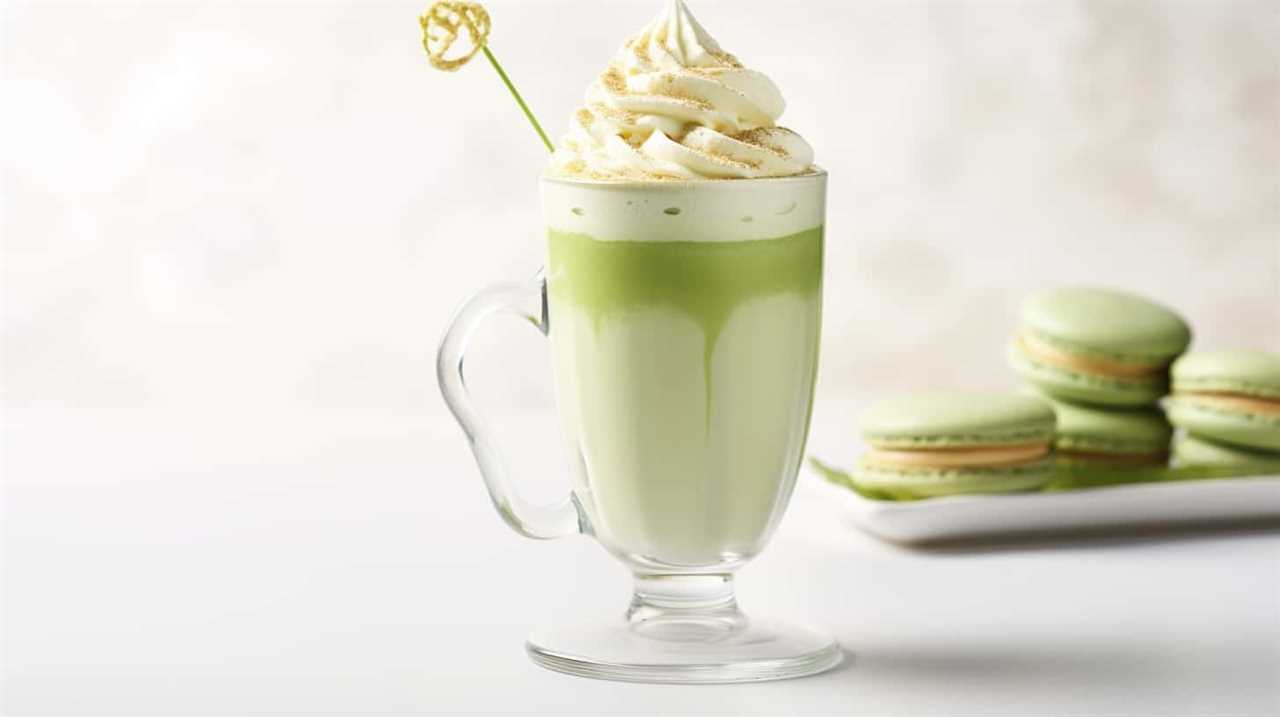
One of the key benefits of matcha is its high concentration of antioxidants. These compounds help protect the body against free radicals, reducing the risk of chronic diseases such as heart disease and certain types of cancer. Matcha also contains caffeine, which provides a gentle energy boost without the jitters commonly associated with coffee.
There are different types of matcha available on the market. The most common types include ceremonial grade matcha and culinary grade matcha. Ceremonial grade matcha is made from the youngest tea leaves, resulting in a vibrant green color and a delicate flavor. It’s typically used in traditional tea ceremonies. On the other hand, culinary grade matcha is slightly less expensive and has a stronger flavor. It’s often used in cooking and baking, as well as in smoothies and lattes.
Matcha Vs. Regular Green Tea
When comparing matcha to regular green tea, we can see distinct differences in their preparation and health benefits. Matcha is made from powdered green tea leaves, while regular green tea is made from steeped leaves. This difference in preparation affects the flavor and nutrient content of the two beverages.
One of the main benefits of matcha is its high concentration of antioxidants. Matcha contains catechins, a type of antioxidant that has been shown to have various health benefits, including reducing the risk of chronic diseases, such as heart disease and cancer. Regular green tea also contains antioxidants, but in lower amounts compared to matcha.
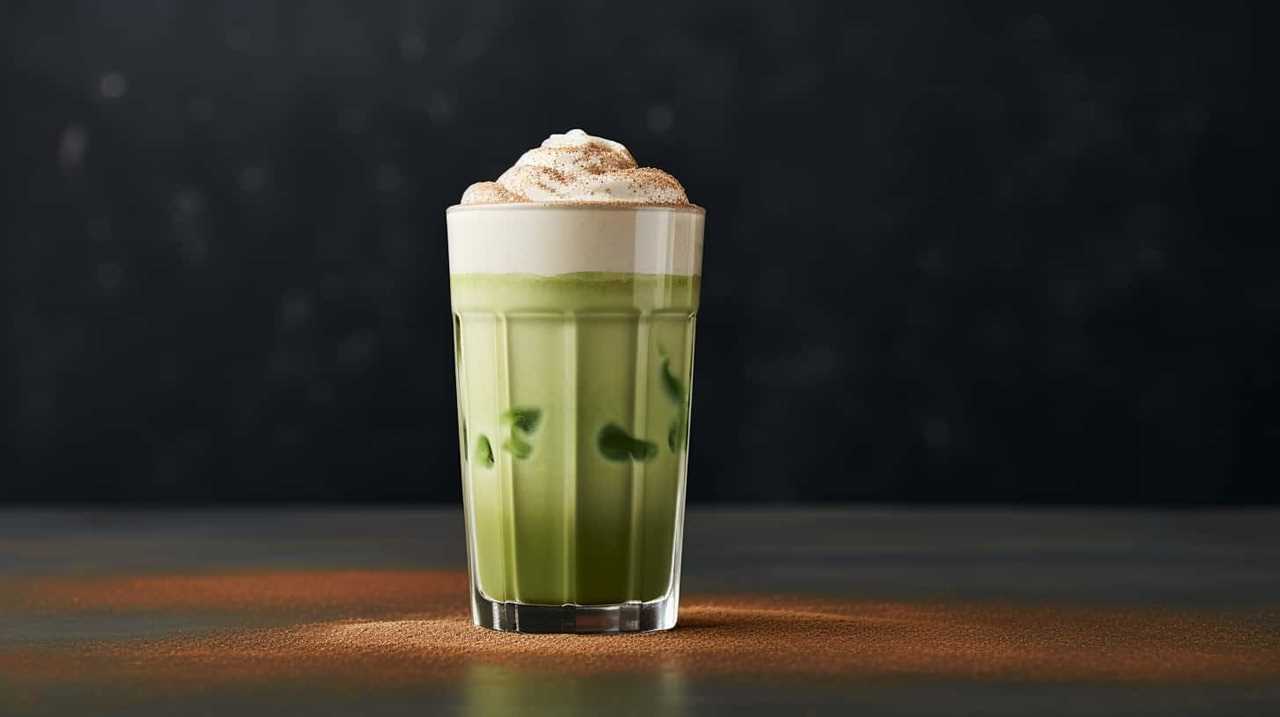
In terms of flavor, matcha has a unique, grassy taste that can be described as slightly bitter and earthy. Some people may find it an acquired taste, but others enjoy its distinct flavor profile. On the other hand, regular green tea has a milder taste and is often described as refreshing and light.
Nutritional Profile of Matcha
The nutritional profile of matcha includes a variety of vitamins, minerals, and antioxidants. Here are three key components of matcha’s nutritional profile:
- Antioxidants: Matcha is rich in antioxidants called catechins, particularly epigallocatechin gallate (EGCG). These antioxidants help combat free radicals in the body, which can reduce the risk of chronic diseases and promote overall health.
- Vitamins and Minerals: Matcha is a good source of vitamins and minerals. It contains vitamin C, vitamin A, vitamin E, vitamin K, and B-complex vitamins. It also provides minerals like potassium, calcium, iron, and magnesium, which are essential for various bodily functions.
- Caffeine: Matcha contains caffeine, which provides an energy boost. However, the caffeine in matcha is different from that in coffee. It’s released slowly into the bloodstream, resulting in a more sustained and calming effect without the jitters or crash associated with coffee.
Understanding matcha’s origins and the ceremonial significance of matcha can help us appreciate its nutritional profile. Matcha originated in China and was later introduced to Japan, where it became an integral part of Japanese tea ceremonies. The ceremonial preparation and consumption of matcha reflect its cultural importance and highlight the appreciation for its unique flavor and health benefits.
Does Matcha Contain Added Sugar
To answer this question, let’s examine the ingredient list of matcha to determine if any sugars have been added. Matcha is made from finely ground green tea leaves, and traditionally, it does not contain any added sugars. However, it is important to note that matcha has a natural sweetness that comes from the tea leaves themselves. This natural sweetness is a result of the amino acids present in the leaves, particularly L-theanine, which gives matcha its unique flavor profile.
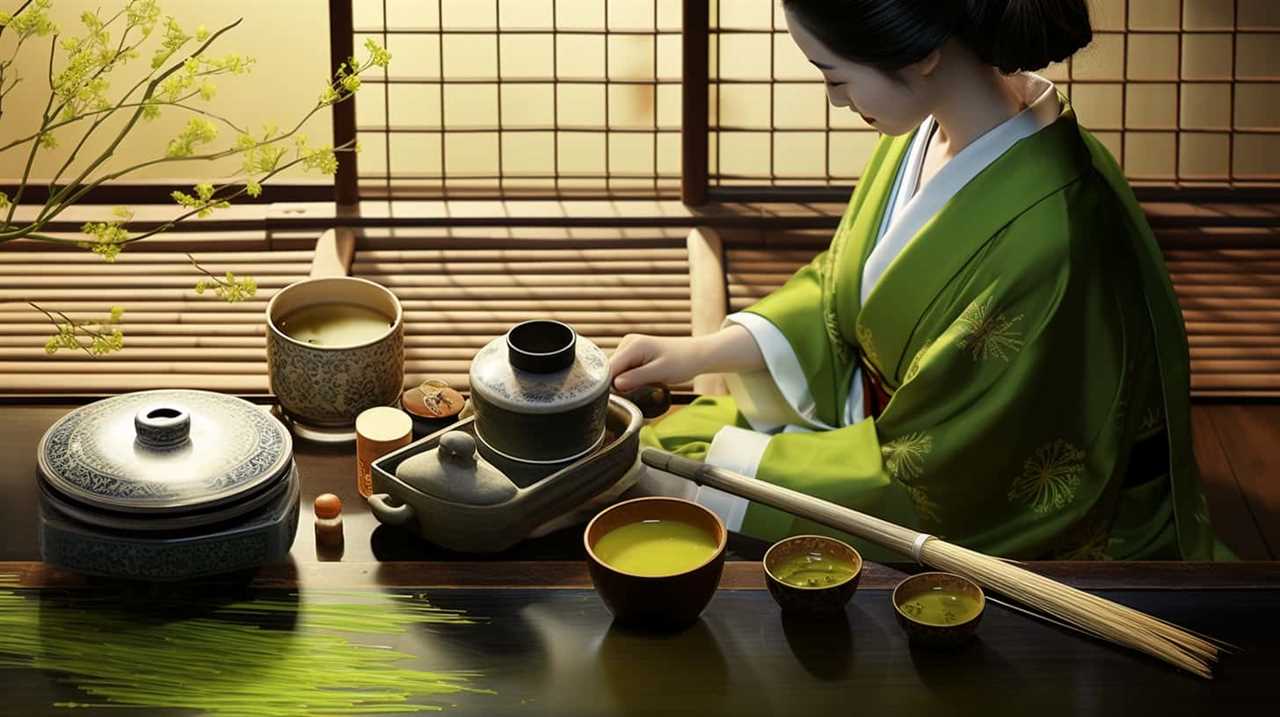
When it comes to the impact of added sugars on matcha, it is crucial to understand that the addition of sugars can significantly alter the nutritional profile and potentially diminish the health benefits of this beverage. Added sugars can contribute to weight gain, increase the risk of chronic diseases like diabetes and heart disease, and negatively affect dental health.
To emphasize the difference between matcha with and without added sugars, let’s take a look at the following table:
| Matcha Type | Natural Sweetness | Added Sugars |
|---|---|---|
| Pure Matcha | High | None |
| Sweetened Matcha | Moderate | Yes |
| Flavored Matcha | Varies | Yes |
Understanding the natural sweetness of matcha and being mindful of the impact of added sugars can help us make informed choices when selecting matcha products.
Understanding Natural Sugars in Matcha
Now let’s discuss the natural sugars present in matcha.

Matcha itself does contain a small amount of natural sugars, although the exact amount can vary depending on the quality and processing of the tea leaves.
Additionally, matcha can be sweetened with natural sweeteners like honey or agave syrup.
It’s important to consider the health implications of sugar, even in its natural form, and to monitor our intake accordingly.
Matcha Sugar Content
When discussing the matcha sugar content, we need to understand the natural sugars present in matcha. Matcha tea is made from finely ground green tea leaves and is known for its vibrant green color and numerous health benefits. Here are three key points to understand about the sugar content of matcha:
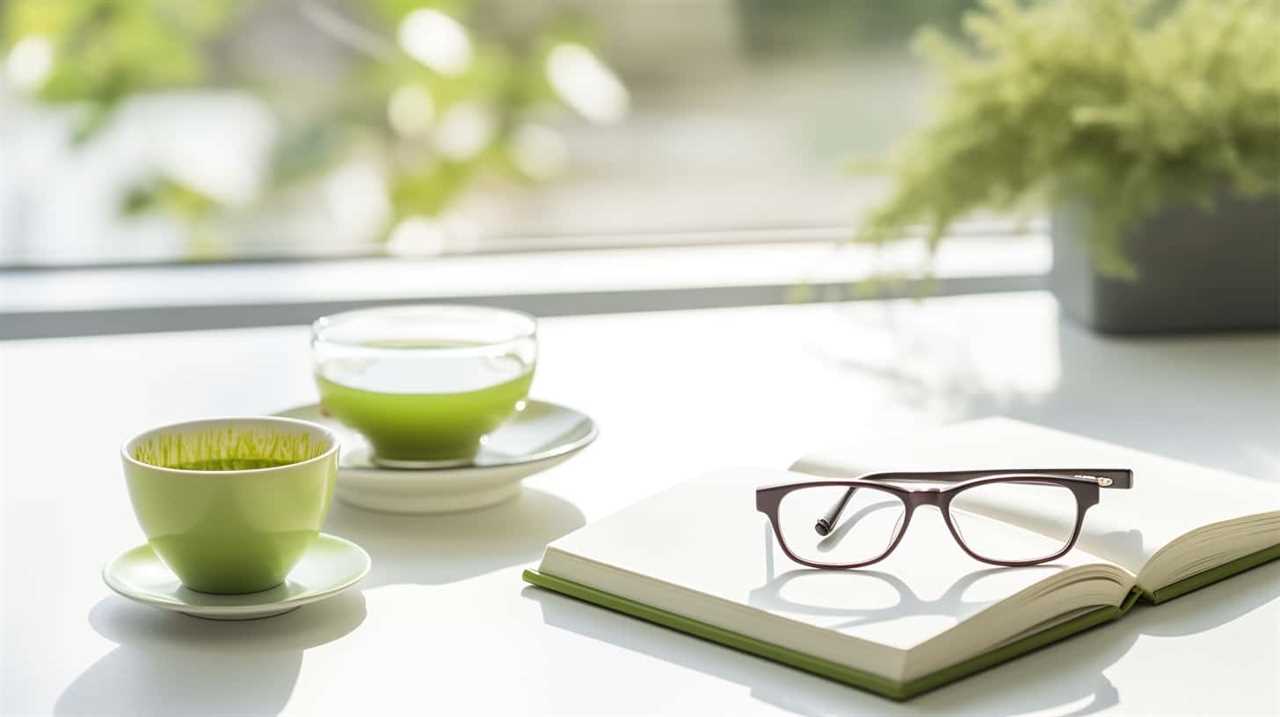
- Natural sugars: Matcha contains natural sugars that are present in the tea leaves themselves. These sugars aren’t added during the processing or production of matcha, making it a healthier alternative to sugar-sweetened beverages.
- Low sugar content: Compared to other sweetened beverages or desserts, matcha has a relatively low sugar content. This makes it a suitable choice for individuals who are watching their sugar intake or trying to maintain a balanced diet.
- Health implications: The natural sugars in matcha provide a source of energy and can be beneficial when consumed in moderation. However, excessive consumption of sugar, even in its natural form, can have negative health implications. It’s important to consume matcha and other sugary foods and beverages in moderation as part of a balanced diet.
Natural Sweeteners in Matcha
The natural sweeteners present in matcha enhance its flavor and contribute to its overall taste profile. Matcha contains a unique combination of natural sugars that give it a subtly sweet taste.
One of the primary natural sweeteners found in matcha is L-theanine, an amino acid that provides a sweet and umami flavor. L-theanine also helps to balance the bitter taste of matcha, resulting in a smooth and enjoyable drinking experience.
Another natural sweetener in matcha is catechins, which are a type of antioxidant. These catechins not only give matcha its vibrant green color but also contribute to its sweetness.
Unlike artificial sugar substitutes, matcha’s natural sweeteners are derived from the tea leaves themselves, making it a healthier alternative for those looking to avoid added sugars.

Health Implications of Sugar
Understanding the health implications of natural sugars in matcha is essential for making informed dietary choices. Here are three important points to consider:
- Health risks: Consuming excessive amounts of sugar, whether natural or added, can lead to various health problems such as obesity, diabetes, heart disease, and tooth decay. It’s crucial to be mindful of your sugar intake to maintain good overall health.
- Hidden sugars: While matcha itself doesn’t contain any sugar, it’s important to be aware of potential hidden sugars in matcha-flavored products or sweetened matcha drinks. Always check the ingredient list and nutritional information to ensure you’re making a wise choice.
- Moderation is key: While natural sugars in matcha are generally considered healthier than added sugars, it’s still important to consume them in moderation. Balancing your overall sugar intake and maintaining a well-rounded diet is key to ensuring optimal health.
Reading Labels: Identifying Sugar in Matcha Products
Let’s dive into how to read labels and identify the presence of sugar in matcha products. Understanding natural sugars and their health implications is crucial for making informed choices about the food and beverages we consume. When it comes to matcha, it’s important to be aware that some products may contain added sugars, which can impact their nutritional value.
To identify sugar in matcha products, start by looking at the ingredient list. Keep an eye out for terms like ‘sugar,’ ‘syrup,’ ‘nectar,’ or any other sweeteners. It’s worth noting that ingredients are listed in descending order, so if sugar is listed near the beginning, it means the product likely contains a significant amount.
Additionally, check the nutrition facts panel for the total sugar content. This value includes both natural sugars from ingredients like matcha and any added sugars. The American Heart Association recommends limiting daily added sugar intake to no more than 25 grams for women and 36 grams for men.
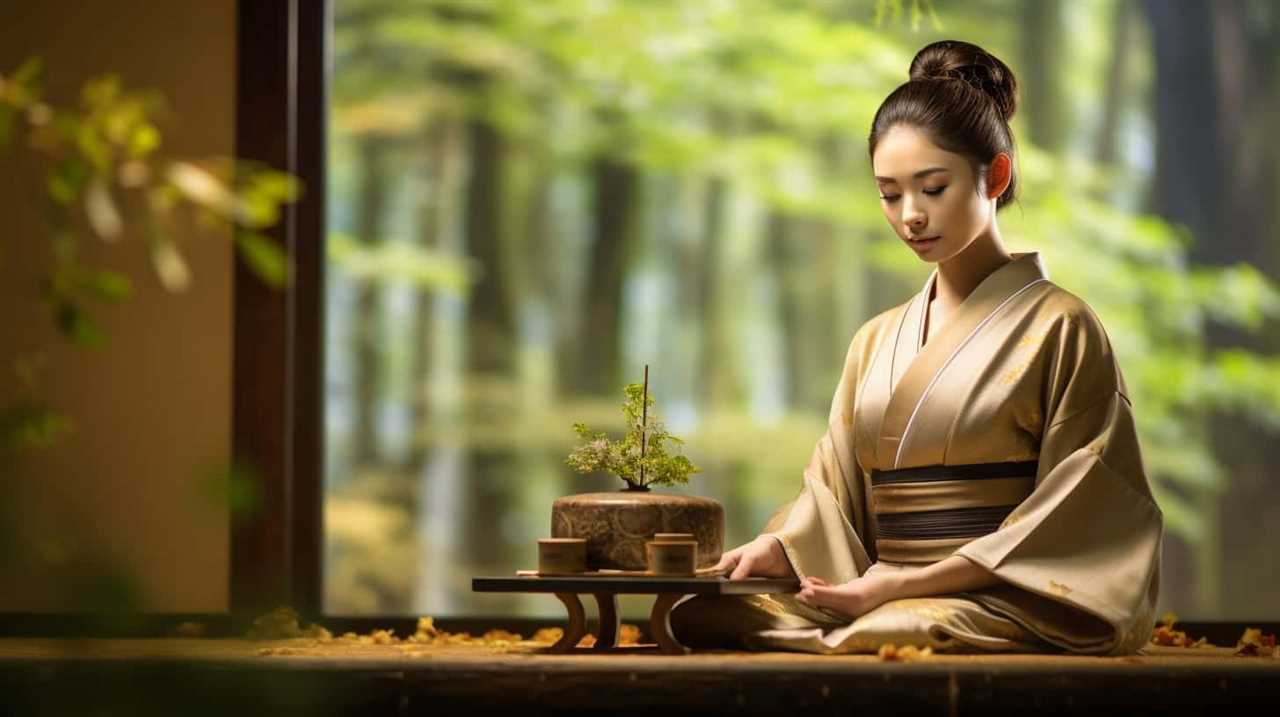
Health Benefits of Matcha
When it comes to the health benefits of matcha, there are several key points to consider.
First, matcha is known for its antioxidant-rich properties, which can help protect the body against free radicals and oxidative stress.
Additionally, matcha has been shown to boost metabolism and energy levels, making it a popular choice for those looking for a natural way to enhance their vitality.
Lastly, matcha has been found to enhance mental focus and concentration, making it a great choice for those needing a little extra cognitive support.

Antioxidant-Rich Properties
We have discovered that matcha is renowned for its antioxidant-rich properties, providing numerous health benefits. Matcha is packed with antioxidants, which help protect the body against free radicals and reduce the risk of chronic diseases. Here are three key antioxidant benefits of matcha:
- High in catechins: Matcha contains a type of antioxidant called catechins, specifically epigallocatechin gallate (EGCG). EGCG has been shown to have potent cancer-fighting properties and may help prevent heart disease.
- Boosts immune system: The antioxidants in matcha can help strengthen the immune system, supporting overall health and reducing the risk of infections.
- Anti-aging effects: Matcha’s antioxidants can help slow down the aging process by protecting cells from damage caused by oxidative stress.
With its antioxidant-rich properties, matcha can be a great addition to a healthy diet and lifestyle.
Transitioning into the next section, we’ll explore how matcha boosts metabolism and energy levels.
Boosts Metabolism and Energy
Matcha boosts our metabolism and energy levels, providing numerous health benefits. It contains a unique combination of caffeine and amino acids that work together to enhance concentration and focus. The high levels of catechins in matcha have been found to increase fat burning during exercise, making it a popular choice among those looking to lose weight. Additionally, matcha contains the amino acid L-theanine, which promotes a sense of calm and relaxation without causing drowsiness. This combination of caffeine and L-theanine provides sustained energy without the jitters or crashes associated with other caffeinated beverages.

| Health Benefits of Matcha |
|---|
| Boosts Concentration |
| Increases Fat Burning |
| Provides Sustained Energy |
Enhances Mental Focus
Enhancing mental focus is one of the key health benefits of incorporating matcha into our daily routine. Matcha contains a unique combination of natural compounds that support mental clarity and cognitive performance. Here are three ways matcha can enhance our mental focus:
- Increased alertness: Matcha contains caffeine, which stimulates the central nervous system and promotes wakefulness. Unlike coffee, matcha provides a more sustained energy boost without the jitters or crash.
- Calmness and relaxation: Matcha contains an amino acid called L-theanine, which promotes a state of relaxation without drowsiness. This amino acid works synergistically with caffeine to enhance mental focus and concentration.
- Improved memory and attention: Research suggests that the antioxidants in matcha, such as catechins, may help protect the brain from age-related cognitive decline. Consuming matcha regularly may enhance memory, attention, and overall cognitive performance.
Matcha for Weight Loss and Blood Sugar Control
For achieving weight loss and blood sugar control, incorporating matcha into our daily routine can be beneficial. Matcha is a type of powdered green tea that’s known for its numerous health benefits.
When it comes to diabetes management, matcha has been shown to have positive effects on blood sugar levels. Research suggests that matcha can help regulate blood sugar by improving insulin sensitivity and reducing insulin resistance. This can be particularly beneficial for individuals with diabetes or those at risk of developing the condition.
Matcha is also rich in antioxidants, which can help protect against oxidative stress and inflammation, both of which are linked to various health conditions, including diabetes. In addition, matcha contains catechins, a type of flavonoid that has been found to have anti-obesity effects. Catechins can increase metabolism and promote fat oxidation, making matcha a potential aid for weight loss.
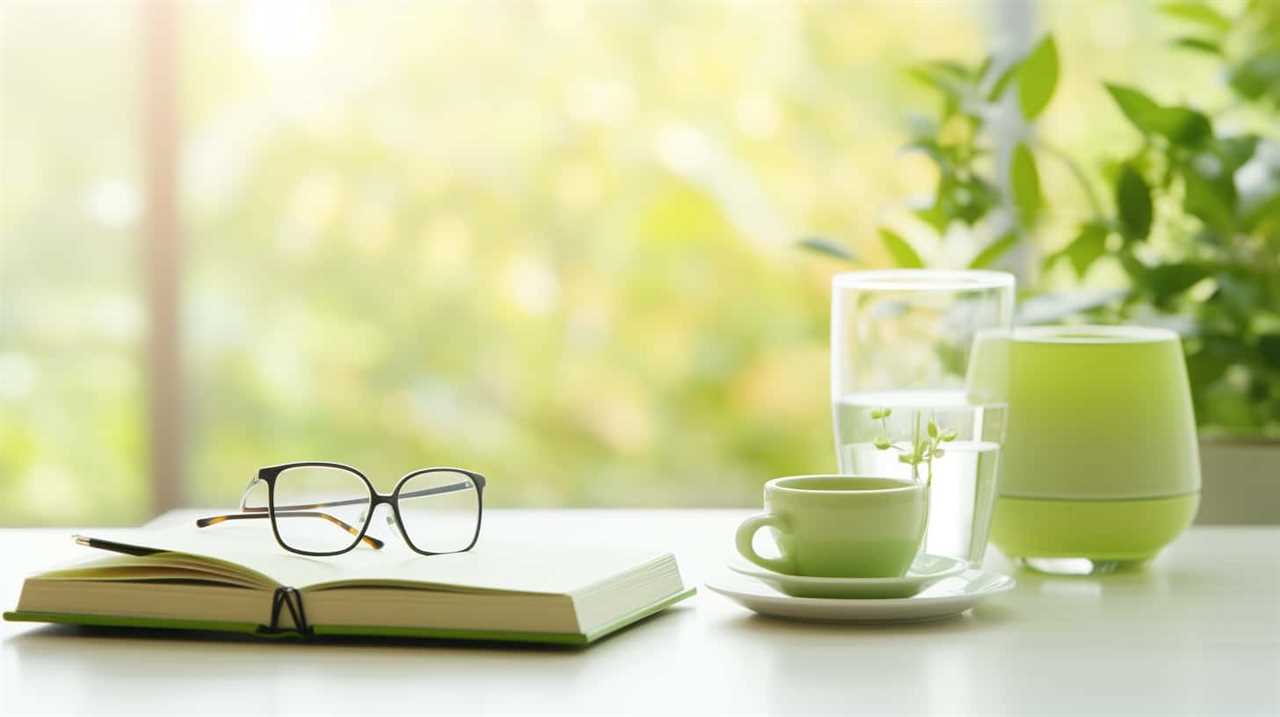
Incorporating matcha into our daily routine can’t only help with weight loss and blood sugar control but also contribute to overall health improvement.
Now, let’s explore some ways to enjoy sugar-free matcha.
Ways to Enjoy Sugar-Free Matcha
Now let’s explore some options for enjoying sugar-free matcha.
There are various alternative sweeteners that can be used to enhance the flavor without adding sugar, such as stevia or monk fruit extract.

Additionally, there are plenty of sugar-free matcha recipes available that incorporate ingredients like coconut milk or almond milk to create a delicious and satisfying beverage.
Alternative Sweeteners for Matcha
To enhance the enjoyment of sugar-free matcha, we can explore various alternative sweeteners. These options provide a way to add some sweetness to matcha without the use of sugar.
Here are three alternative sweeteners that you can consider:
- Stevia: Stevia is a natural sweetener that comes from the Stevia rebaudiana plant. It contains zero calories and has no effect on blood sugar levels. Stevia is known for its intense sweetness, so a little goes a long way.
- Monk fruit extract: Monk fruit extract is derived from the fruit of the Siraitia grosvenorii plant. It’s a zero-calorie sweetener that doesn’t raise blood sugar levels. Monk fruit extract offers a subtle sweetness that can complement the flavor of matcha without overpowering it.
- Erythritol: Erythritol is a sugar alcohol that occurs naturally in certain fruits and fermented foods. It has a sweet taste but very few calories. Erythritol doesn’t affect blood sugar levels and is well tolerated by most people.
Sugar-Free Matcha Recipes
Let’s dive into some delicious ways we can enjoy sugar-free matcha with these easy and flavorful recipes.
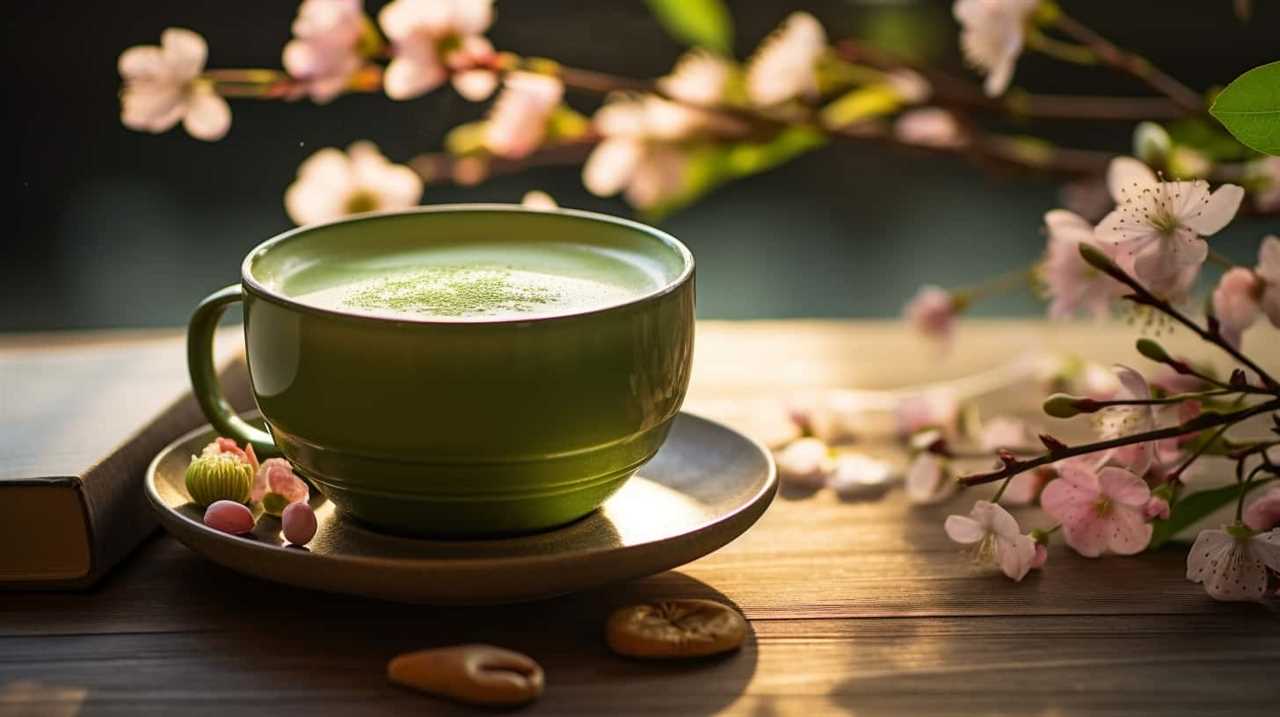
When it comes to making sugar-free matcha recipes, there are plenty of sugar alternatives that can be used to add sweetness without the added calories. One option is to use natural sweeteners like stevia or monk fruit, which are low in calories and have a minimal impact on blood sugar levels.
Another option is to use fruits like ripe bananas or dates, which provide natural sweetness along with fiber and nutrients. These sugar alternatives can be used in a variety of healthy dessert options such as sugar-free matcha smoothies, matcha chia pudding, or matcha-infused energy balls.
By incorporating these sugar-free matcha recipes into your diet, you can satisfy your sweet tooth while still maintaining a healthy lifestyle.
Now, let’s explore some matcha recipes for sugar-conscious individuals.
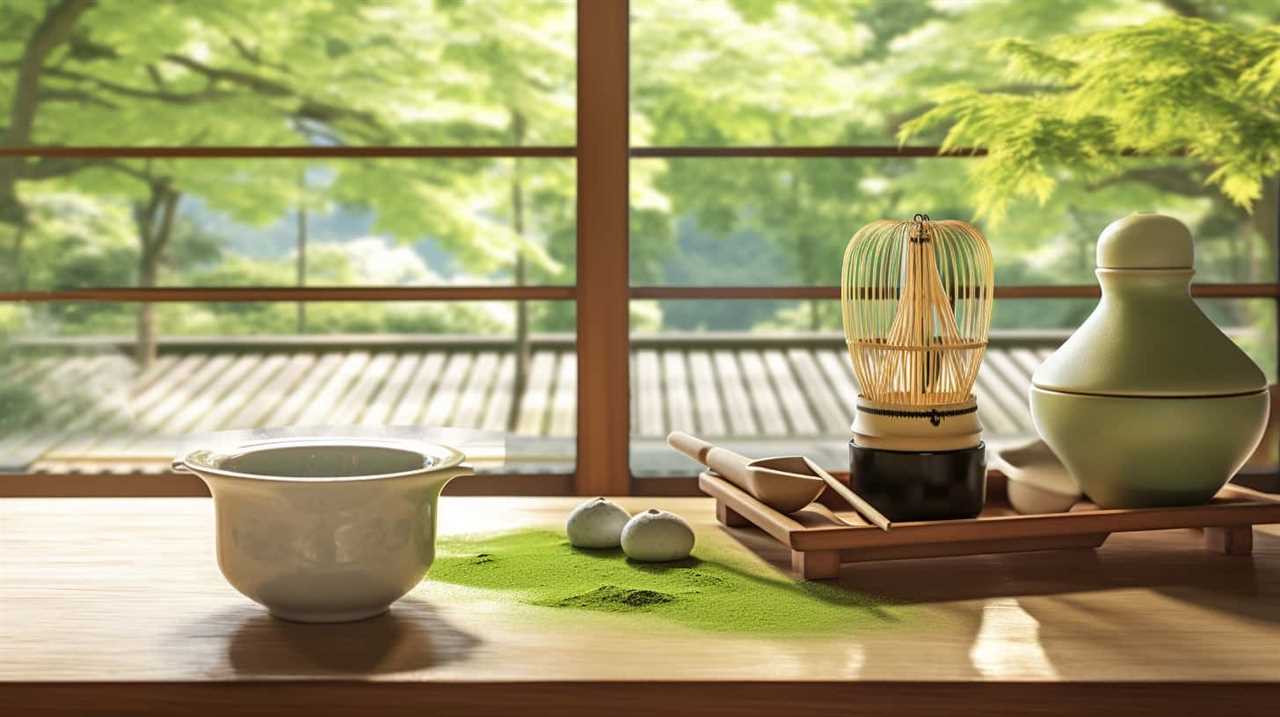
Matcha Recipes for Sugar-Conscious Individuals
We will explore matcha recipes that are suitable for individuals who are conscious of their sugar intake. For those who love matcha but want to avoid added sugars, there are plenty of options to enjoy. Here are three matcha recipes that are sugar-conscious and delicious:
- Sugar-Free Matcha Smoothie: Start your day with a refreshing and healthy matcha smoothie. Blend together unsweetened almond milk, frozen banana, a handful of spinach, and a teaspoon of matcha powder. You can add a natural sugar substitute like stevia or monk fruit if desired. This smoothie is packed with antioxidants and provides a great energy boost without the added sugar.
- Matcha Chia Pudding: Mix chia seeds, unsweetened almond milk, and matcha powder in a jar. Let it sit in the fridge overnight, and in the morning, you’ll have a delicious and nutritious matcha chia pudding. You can top it with fresh berries or a sprinkle of unsweetened coconut flakes for added flavor.
- Matcha Energy Balls: Combine almond flour, unsweetened shredded coconut, matcha powder, a natural sweetener like dates or honey, and a little coconut oil in a food processor. Roll the mixture into small balls and refrigerate for a few hours. These matcha energy balls make a perfect snack for when you need a quick pick-me-up without the added sugar.
Final Thoughts: Incorporating Matcha Into a Low-Sugar Diet
Incorporating matcha into a low-sugar diet can be a beneficial choice for individuals looking to maintain their health and wellness. Matcha, a powdered green tea, is naturally low in sugar and calories, making it a suitable option for those who are watching their sugar intake. By incorporating matcha into your diet, you can enjoy its numerous health benefits without worrying about added sugars.
When it comes to sweetening matcha, there are alternative sweeteners available that can be used in moderation. Stevia, a natural sweetener derived from the stevia plant, is a popular choice for those looking to reduce their sugar consumption. It provides a sweet taste without the added calories or impact on blood sugar levels. Another option is monk fruit sweetener, which is derived from a small fruit native to Southeast Asia. Monk fruit sweetener is known for its zero-calorie content and its ability to add sweetness to foods and beverages.
While it’s important to be mindful of the amount of sweetener used, incorporating matcha into a low-sugar diet can be a flavorful and enjoyable way to support your health goals. Whether you choose to enjoy matcha in its traditional form or incorporate it into recipes such as smoothies or baked goods, the versatility of matcha makes it a great addition to a low-sugar diet.

Frequently Asked Questions
Is Matcha a Type of Green Tea?
Yes, matcha is a type of green tea. It originated in Japan and is known for its vibrant green color and distinct flavor. Matcha can be used in various recipes, such as matcha lattes and matcha desserts.
How Is Matcha Different From Regular Green Tea in Terms of Taste?
Matcha is different from regular green tea in terms of taste. It has a vibrant, grassy flavor that is rich and smooth. Unlike other teas, matcha is ground into a fine powder and whisked with water for a unique brewing technique.
Does Matcha Have Any Vitamins or Minerals?
Matcha has a rich nutrient profile, containing vitamins and minerals like vitamin C, vitamin A, and potassium. Compared to other types of tea, matcha provides a higher concentration of these beneficial compounds.
Are There Any Health Benefits of Consuming Matcha?
We all know matcha is a sugar bomb, right? Well, surprise! Matcha actually has numerous health benefits, including its potential to aid in weight loss and its powerful antioxidant properties. Who knew?
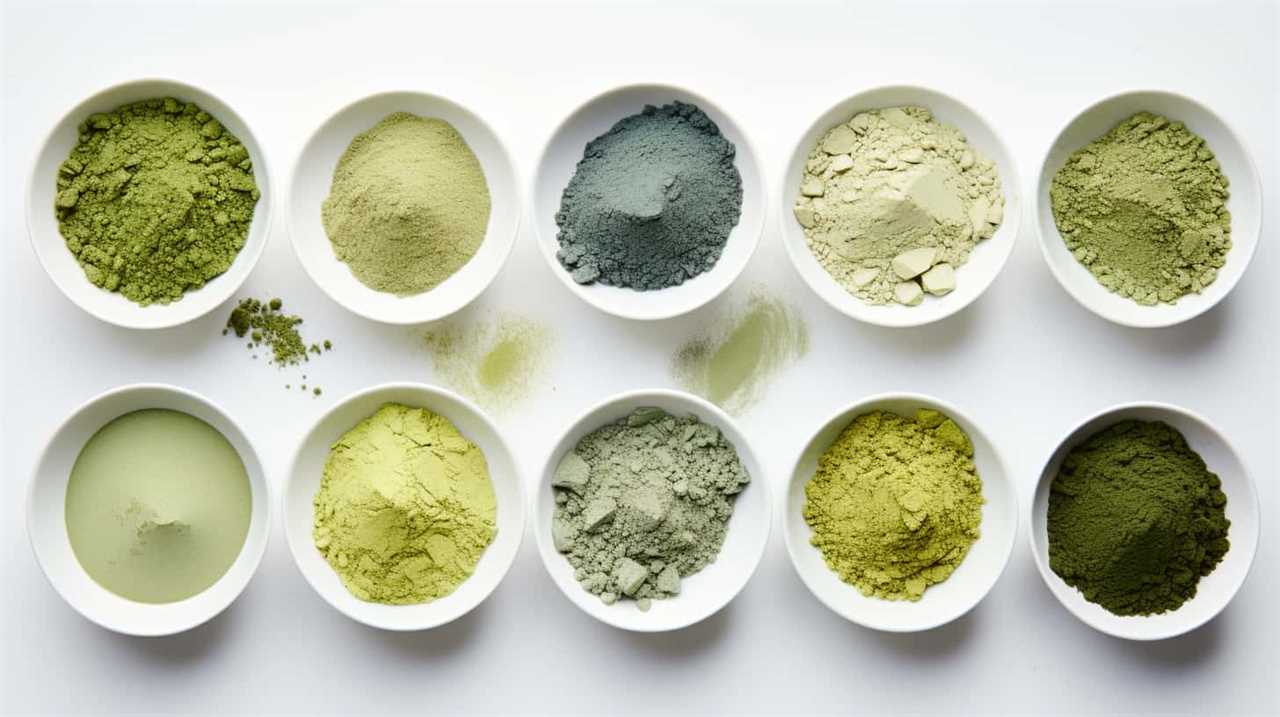
Can Matcha Be Used in Sugar-Free Recipes?
Matcha can be used in sugar-free recipes by substituting sugar with alternatives like stevia or monk fruit. However, it’s important to consider that sugar plays a role in matcha’s flavor profile, so the taste may be slightly different.
Conclusion
In conclusion, matcha doesn’t contain added sugar, making it a great option for those looking to reduce their sugar intake.
Its natural sugars are balanced with other beneficial nutrients, making it a healthy choice for weight loss and blood sugar control.
By incorporating sugar-free matcha into your diet, you can enjoy its unique flavor and numerous health benefits without worrying about added sugar.

So, why not give matcha a try and experience the ‘sweetness of health’?
Justin is a seasoned author, coffee and tea enthusiast, and an essential member of the Cappuccino Oracle team. With a keen appreciation for the complexities of coffee, coffee alternatives, and tea, Justin has dedicated his professional career to exploring these realms and sharing his insights with readers worldwide.
Justin’s immersion in the world of coffee, coffee alternatives, and tea began at a young age, kindling a passion that extended beyond mere consumption. This love for these beverages led him to combine his talent for writing with his devotion to coffee and tea, bringing him to Cappuccino Oracle as a dedicated author.
Matcha
Unveiling The Mysteries Of Matcha: Insights On Its Origins, Production, And Quality

Have you ever been curious about the mysteries behind the rich and natural flavors of matcha? If so, get ready to join me on an adventure as we uncover the secrets of matcha, delving into its origins, production, and quality.
As a lover of all things tea, I have delved deep into the world of matcha, immersing myself in its rich history and intricate production process. From the shade-grown tea leaves to the meticulous grinding technique, every step is a labor of love that culminates in the velvety smooth powder we know as matcha.
Join me as we unravel the secrets behind this ancient Japanese tradition and discover why quality is key when indulging in this verdant elixir. We’ll explore the nuances of flavor, the importance of sourcing, and even delve into the fascinating world of other tea varieties.
So grab a cup, sit back, and let’s dive into the captivating world of matcha.
Key Takeaways
- Matcha tea is made from powdered green tea leaves and has a long and labor-intensive production process.
- Premium matcha is made from the first harvest in early spring, using the top 3 sprouts of the tea plant and ground tencha leaves.
- Cheaper matchas may skip some steps in the production process and are more suitable for matcha lattes.
- High-quality matcha is recommended for sparing consumption, as it has a smoother flavor and more health benefits compared to cheaper matchas.
What is matcha?
I’ve learned that matcha is a powdered green tea made from special tea leaves that are shaded before harvest, and it has a long and labor-intensive production process.
There are different types of matcha available, but the premium matcha is made from the first harvest in early spring, using only the top 3 sprouts of the tea plant. The leaves are then steamed, dried, and have their stems removed before being ground into a fine powder using a specialized mill made of granite.
It’s important to note that high-quality matcha is recommended for sparing consumption, as it has a complex production process that results in a smooth flavor. Matcha also offers various health benefits, such as being rich in antioxidants, boosting metabolism, and improving mental alertness.
Production process
The matcha production process involves shading the tea leaves before harvest and selecting the top three sprouts of the tea plant for premium matcha. Shading is a technique used to enhance the flavor and quality of the tea leaves. By covering the tea plants with shade, the leaves produce more chlorophyll and amino acids, resulting in a vibrant green color and a rich, umami taste.
After the shading period, only the top three sprouts of the tea plant are carefully handpicked for premium matcha. These selected leaves, known as tencha leaves, are then steamed, dried, and have their stems removed.
Finally, the tencha leaves are ground into a fine powder using a specialized granite mill. This process results in the smooth and concentrated matcha powder that we enjoy.
Quality and consumption
Let me tell you, indulging in high-quality matcha is like sipping a vibrant green elixir that awakens your taste buds and nourishes your body with its rich flavor and numerous health benefits. Matcha’s health benefits are truly remarkable. Packed with antioxidants, vitamins, and minerals, matcha is known to boost metabolism, enhance focus and concentration, and strengthen the immune system.
But not all matcha is created equal. Different grades of matcha exist, ranging from ceremonial grade to culinary grade. Ceremonial grade matcha is made from the highest quality tencha leaves and has a smooth, vibrant green color and a delicate, umami flavor. It is best enjoyed on its own, whisked with hot water.
On the other hand, culinary grade matcha is more affordable and is suitable for making matcha lattes, smoothies, and baked goods. Although it may have a slightly bitter taste and a duller color, it still provides health benefits.
So, whether you choose to indulge in high-quality ceremonial grade matcha or opt for the more affordable culinary grade, incorporating matcha into your routine is a delicious way to reap its health benefits.
Frequently Asked Questions
What are some popular ways to enjoy matcha besides drinking it as tea?
Besides drinking matcha as tea, some popular ways to enjoy it include indulging in matcha desserts like matcha ice cream, matcha cake, and matcha cookies. Additionally, matcha smoothies are a refreshing and healthy option.
Are there any specific health benefits associated with consuming matcha?
I’m no expert, but matcha is said to have potential health benefits. Some claim it can aid in weight loss due to its high antioxidant content and metabolism-boosting properties. However, more research is needed to confirm these claims.
How does the quality of matcha affect its flavor and overall experience?
The quality of matcha directly affects its flavor and overall experience. Higher quality matcha, made from carefully selected leaves and processed with precision, offers a smoother and more vibrant flavor, while lower quality matcha may have a less appealing taste and color.
Can matcha be used in cooking or baking?
"Where there’s matcha, there’s a way! Matcha can be used in a variety of cooking and baking recipes, adding a vibrant green color and a unique earthy flavor to dishes like matcha desserts."
Are there any specific tips or techniques for properly preparing matcha tea at home?
To properly prepare matcha tea at home, start by sifting the matcha powder to remove any clumps. Then, choose water at around 175°F to 180°F for the best flavor. Gradually add water to the matcha and whisk in a "W" or "M" motion until frothy. Enjoy!
Conclusion
In conclusion, matcha tea is not just a beverage, but a rich and fascinating tradition that has evolved over centuries.
From its origins in Japan to its intricate production process, matcha is a labor of love.
The quality of matcha is crucial, as the steps taken in its production directly impact its flavor and aroma.
Whether you’re a matcha connoisseur or a beginner, there is a matcha tea out there for you.
So, why not indulge in a cup of this vibrant green elixir and experience the magic of matcha for yourself? It’s a journey worth embarking on!
Arf, an author and an innovative enthusiast of coffee, coffee alternatives, and tea, plays a crucial role as a contributor to the esteemed Cappuccino Oracle platform. Renowned for his curiosity and passion for these captivating beverages, Arf has carved out a unique space for himself in the world of exploration and writing. He realized that coffee, coffee alternatives, and tea are not mere drinks to keep one awake, but universes of flavors and stories waiting to be explored.
Arf’s articles for Cappuccino Oracle blend meticulous research with personal experiences, providing readers with an in-depth understanding of various types of coffee, coffee alternatives, and tea, along with their unique characteristics, cultures, and histories. His honest reviews and engaging narratives guide readers on their own journeys, helping them discover their preferences and find their perfect brew.
Matcha
Unveiling The Truth Behind Starbucks’ Matcha: A Disappointing Blend

Being a lover of tea, I was eager to sample Starbucks’ matcha beverages, anticipating a flavorful and genuine taste. However, to my dismay, I found that it was a subpar mixture of inexpensive green tea powder and an excessive amount of sugar. This was a stark contrast to the customary matcha experience that I had grown accustomed to.
The use of low-quality matcha by Starbucks is driven by the need for mass production and a consistent taste across all locations. But in this pursuit, they have sacrificed the true essence of matcha. Authentic matcha production involves meticulous steps to ensure a high-quality and flavorful product, steps that Starbucks seems to skip.
The result is a matcha latte packed with 32 grams of sugar, equivalent to a can of soda, and a whopping 240 calories. It’s time to unveil the truth behind Starbucks’ matcha and explore better options for a truly satisfying tea experience.
Key Takeaways
- Starbucks uses a cheap green tea powder for their matcha drinks, which may not even be considered matcha.
- The cheap matcha powder is mixed with a lot of sugar, negating the health benefits and undermining the quality of the tea.
- Starbucks’ matcha latte contains a high amount of sugar, similar to a can of soda, and has a significant number of calories.
- To have a better matcha experience, it is recommended to explore premium, first harvest matcha made by talented farmers in Japan and to try different matcha options to find preferred taste.
What is Starbucks Matcha?
Starbucks Matcha is a cheap green tea powder mixed with a high amount of sugar, which not only undermines the health benefits of matcha but also fails to deliver the natural, great-tasting flavor of authentic matcha tea.
The ingredients used in Starbucks matcha include low-quality green tea powder that is likely produced on a large scale. Unlike traditional matcha production methods, Starbucks skips certain steps to save time and money. These steps, such as shading the tea plants to reduce bitterness and selecting the top leaves for their flavor and nutrients, are crucial in creating high-quality matcha.
Instead, Starbucks opts for a blend of cheap green tea powder mixed with sugar, resulting in a dull and bitter flavor. This disappointing blend of ingredients does not live up to the standards of true matcha tea.
Quality vs. Cheap Matcha
Indulging in high-quality matcha is like savoring a delicate melody that dances on your taste buds, while settling for cheap matcha is akin to a discordant symphony that leaves a bitter aftertaste. When it comes to matcha, quality matters. Traditional matcha production is an art that requires time, patience, and attention to detail. The importance of shading the tea plants, selecting the top leaves, and using a stone mill to grind the leaves into a fine powder cannot be overstated. These steps not only enhance the flavor but also preserve the health benefits of matcha. High-quality matcha is rich in antioxidants, boosts metabolism, and promotes a sense of calm. On the other hand, cheap matcha often lacks these qualities as it skips crucial steps and is mixed with sugar and other additives. Don’t settle for a subpar matcha experience; choose high-quality matcha for its exceptional taste and health benefits.
| Traditional Matcha Production |
|---|
| Shading the tea plants |
| Selecting the top leaves |
| Grinding with a stone mill |
The importance of traditional matcha production cannot be overstated. These steps not only enhance the flavor but also preserve the health benefits of matcha. High-quality matcha is rich in antioxidants, boosts metabolism, and promotes a sense of calm. On the other hand, cheap matcha often lacks these qualities as it skips crucial steps and is mixed with sugar and other additives. Don’t settle for a subpar matcha experience; choose high-quality matcha for its exceptional taste and health benefits.
Recommendations for Better Matcha
Exploring different matcha options can lead to a better matcha experience. When it comes to matcha, not all options are created equal. While Starbucks may offer a convenient matcha latte, there are alternative options that provide a more authentic and higher quality experience.
Premium matcha, specifically first harvest matcha, is made by talented farmers in Japan and can be enjoyed plain, without the need for excessive sugar or additives. By choosing premium matcha, you can reap the full benefits that matcha has to offer, such as its high antioxidant content and potential health benefits.
Additionally, exploring different types of matcha, such as Japanese black tea, can expand your taste palate and introduce you to new and exciting flavors. So, why settle for a disappointing blend when there are better matcha options out there waiting to be explored?
Frequently Asked Questions
How is Starbucks matcha different from traditional matcha?
Starbucks matcha differs from traditional matcha in terms of quality and taste. One interesting statistic is that Starbucks’ matcha latte contains 32 grams of sugar, similar to a can of soda, which undermines the health benefits of matcha.
What are the health benefits of matcha and how do they differ between Starbucks matcha and premium matcha?
The health benefits of matcha include high levels of antioxidants, increased energy, and improved focus. However, Starbucks matcha quality is compromised due to the use of cheap powder mixed with sugar, negating these benefits.
Can you customize the sweetness level of Starbucks matcha drinks?
Yes, you can customize the sweetness level of Starbucks matcha drinks. They offer popular matcha drink variations like matcha latte and matcha frappuccino, allowing customers to choose the amount of sweetener they prefer.
Are there any alternative options for matcha drinks at Starbucks?
Yes, there are alternative options for matcha drinks at Starbucks. However, it’s important to note that the taste may not be comparable to traditional matcha. Exploring different matcha options and Japanese black tea can provide a better experience.
What are the steps involved in producing high-quality matcha and how does Starbucks’ matcha production differ?
Starbucks’ matcha production process differs from traditional matcha production in Japan. High-quality matcha involves shading the tea plants, selecting the top leaves, steaming, drying, and grinding them. However, Starbucks skips these steps, resulting in a lower quality and less authentic matcha experience.
Conclusion
In conclusion, after delving into the truth behind Starbucks’ matcha, it’s clear that their blend falls short of expectations. The use of cheap green tea powder mixed with excessive sugar dilutes any potential health benefits and fails to deliver an authentic matcha experience.
To truly enjoy the rich and flavorful taste of matcha, it’s recommended to explore premium, first harvest options crafted by skilled Japanese farmers. Don’t settle for subpar matcha; treat yourself to a tea experience that’ll leave your taste buds dancing with delight.
Arf, an author and an innovative enthusiast of coffee, coffee alternatives, and tea, plays a crucial role as a contributor to the esteemed Cappuccino Oracle platform. Renowned for his curiosity and passion for these captivating beverages, Arf has carved out a unique space for himself in the world of exploration and writing. He realized that coffee, coffee alternatives, and tea are not mere drinks to keep one awake, but universes of flavors and stories waiting to be explored.
Arf’s articles for Cappuccino Oracle blend meticulous research with personal experiences, providing readers with an in-depth understanding of various types of coffee, coffee alternatives, and tea, along with their unique characteristics, cultures, and histories. His honest reviews and engaging narratives guide readers on their own journeys, helping them discover their preferences and find their perfect brew.
Matcha
The Ultimate Guide To Using Chashaku: Your Matcha Essential

Being a lover of matcha, I am aware that the crucial factor in achieving the perfect matcha bowl is the equipment we utilize. When it comes to preparing matcha, there is one tool that is particularly essential: the chashaku.
This bamboo spoon, with its elegant design and precise measurements, is the secret weapon of matcha lovers worldwide. In this ultimate guide, I will take you on a journey through the history and evolution of the chashaku, and show you how to use it like a pro.
From its origins as a metal or ivory scoop to its modern-day incarnation in bamboo, the chashaku has come a long way. With its 48° bend and 18mm length, it effortlessly scoops the perfect amount of matcha from its container.
So grab your chashaku and get ready to elevate your matcha game to new heights. Let’s dive in and discover the wonders of this matcha essential.
Key Takeaways
- Chashaku is a bamboo spoon used to scoop matcha powder in the Japanese tea ceremony and by matcha lovers worldwide.
- Chashaku is one of the three important tea utensils used in the tea ceremony and is about 18mm in length with a 48° bend at the end for scooping.
- Chashaku is made of bamboo to avoid negative reactions with matcha powder and is a great measurement tool for matcha powder.
- Two scoops of chashaku is the standard amount for a bowl of matcha tea, and it is easy to maneuver in matcha tins or natsume due to its small size.
What is Chashaku?
Chashaku is a bamboo spoon used to scoop matcha powder, and it’s one of the three important tea utensils used in the Japanese tea ceremony.
Made from a single piece of bamboo, this elegant tool has a long history dating back to the Muromachi period in Japan. Originally crafted from metal or ivory, chashaku evolved to be made of bamboo due to its natural properties and to avoid any negative reactions with matcha powder.
The design of chashaku is both functional and beautiful, with a length of about 18mm and a 48° bend at the end for easy scooping. There are different styles of chashaku scoops, each with its own unique shape and characteristics. The back of the chashaku has a rough texture, while the face is smooth and sleek.
Whether you’re a matcha lover or a tea ceremony enthusiast, using a chashaku adds a touch of authenticity and tradition to your matcha preparation.
History and Evolution
During the Muromachi period in Japan, the chashaku spoon evolved from being made of metal or ivory to its current bamboo form, which is about 18mm in length and has a 48° bend at the end for easier scooping. The history and evolution of the chashaku is a testament to its significance in Japanese tea ceremonies and its cultural importance in matcha preparation.
| The significance of chashaku in Japanese tea ceremonies | The cultural importance of chashaku in matcha preparation |
|---|---|
| Chashaku is one of the three important tea utensils used in the tea ceremony. | Chashaku is a great measurement tool for matcha powder. |
| Chashaku originated in Japan during the Muromachi period. | Chashaku’s small size allows for easy maneuvering in matcha tins or natsume. |
| Originally made of metal or ivory, chashaku evolved to be made of bamboo. | Chashaku is made from a single piece of bamboo and shaped with a bend for the scoop. |
| Chashaku is made of bamboo to avoid negative reactions with matcha powder. | The back of chashaku has a rough texture, while the face is smooth and sleek. |
The chashaku’s role in Japanese tea ceremonies cannot be understated. It is one of the three essential utensils used in the tea ceremony, alongside the chawan (tea bowl) and chasen (tea whisk). The chashaku’s small size and precise measurement make it the perfect tool for scooping matcha powder. Its evolution from metal or ivory to bamboo shows the cultural importance placed on this utensil. The chashaku’s design, with its gentle bend and smooth face, allows for easy and graceful scooping of matcha. Using the chashaku is not only practical but also a way to honor the centuries-old tradition of matcha preparation.
How to Use Chashaku
To use the chashaku, I simply hold it like a pencil and dip the scoop into the matcha container. Then, I carefully lift the chashaku scoop out and place it over the matcha bowl to dump the powder.
It’s a simple and elegant technique that ensures the perfect amount of matcha every time.
But did you know that there are alternative ways to use the chashaku? Some matcha lovers prefer to use a teaspoon or a regular spoon to scoop their matcha powder. While these alternatives may work in a pinch, they don’t offer the same precision and authenticity as the chashaku.
The chashaku’s unique design and size make it the ideal tool for measuring matcha powder. Plus, using the chashaku adds a traditional touch to the matcha preparation process, enhancing the overall experience.
So why settle for anything less? Embrace the chashaku and elevate your matcha game to the next level.
Frequently Asked Questions
What are the different types of materials used to make chashaku besides bamboo?
There’s something truly magical about the chashaku, the bamboo spoon that gracefully scoops matcha powder. While bamboo is the traditional material, chashaku can also be made from metal or ivory, although these alternatives are less common.
Can chashaku be used to scoop other powders besides matcha?
Yes, chashaku can be used to scoop other powders besides matcha. However, it is primarily designed for scooping matcha powder and is most commonly used in Japanese tea ceremonies. To properly clean and care for a chashaku, it is recommended to wipe it with a dry towel or tissue to avoid water damage. The chashaku is a versatile tool with different uses in the tea ceremony, making it an essential item for matcha lovers.
How long does a chashaku typically last before it needs to be replaced?
A chashaku typically lasts for a long time, but the lifespan can vary depending on the material. Bamboo chashaku is the most common and durable option, while metal or ivory may wear down over time. Proper care involves cleaning with a dry towel or tissue to avoid water damage.
Can chashaku be used with different types of matcha bowls or is it specific to a certain style?
Absolutely! Chashaku can be used with various types of matcha bowls, adapting to different styles. Its small size and unique design make it perfect for scooping matcha powder and adding a touch of elegance to your matcha preparation.
Are there any alternative utensils that can be used in place of chashaku for scooping matcha powder?
Yes, there are alternative utensils for scooping matcha powder, such as a teaspoon or a small spoon. However, using a chashaku has its benefits. Its unique design allows for precise measurements and easy maneuvering in matcha tins.
Conclusion
In conclusion, using chashaku isn’t just a practical way to measure and scoop matcha powder, but it’s also an essential tool for embracing the art and tradition of the Japanese tea ceremony.
While some may argue that using a regular spoon can achieve the same result, chashaku offers a unique experience that connects us to centuries of tea culture. Imagine holding the slender bamboo spoon, feeling the weight of tradition in your hand, and delicately scooping the vibrant green matcha powder.
It’s a sensory journey that brings us closer to the beauty and mindfulness of matcha preparation. So, embrace the chashaku, and let it elevate your matcha experience to new heights.
Arf, an author and an innovative enthusiast of coffee, coffee alternatives, and tea, plays a crucial role as a contributor to the esteemed Cappuccino Oracle platform. Renowned for his curiosity and passion for these captivating beverages, Arf has carved out a unique space for himself in the world of exploration and writing. He realized that coffee, coffee alternatives, and tea are not mere drinks to keep one awake, but universes of flavors and stories waiting to be explored.
Arf’s articles for Cappuccino Oracle blend meticulous research with personal experiences, providing readers with an in-depth understanding of various types of coffee, coffee alternatives, and tea, along with their unique characteristics, cultures, and histories. His honest reviews and engaging narratives guide readers on their own journeys, helping them discover their preferences and find their perfect brew.
-

 Mushroom Coffee4 weeks ago
Mushroom Coffee4 weeks agoYour Ultimate Guide to Ryze Mushroom Coffee: 9 Things to Know
-

 Mushroom Coffee4 weeks ago
Mushroom Coffee4 weeks agoUnveiling the Puzzle: Top 10 Alternatives to Ryze Mushroom Coffee Revealed
-

 Mushroom Coffee4 weeks ago
Mushroom Coffee4 weeks agoUnveiling the Mysteries of Ryze Mushroom Coffee: Top 10 Questions Answered
-

 Rooibos3 weeks ago
Rooibos3 weeks ago9 Essential Steps to Perfect Rooibos Tea: A Brewing Guide
-

 Turmeric Tea3 weeks ago
Turmeric Tea3 weeks agoTurmeric Ginger, Cinnamon, Lemon, Honey Tea Benefits
-

 Mushroom Coffee4 weeks ago
Mushroom Coffee4 weeks ago3 Best Techniques to Brew Ryze Mushroom Coffee
-

 Mushroom Coffee4 weeks ago
Mushroom Coffee4 weeks agoIs Ryze Mushroom Coffee’s Caffeine Content More like Decaf or Regular Coffee?
-
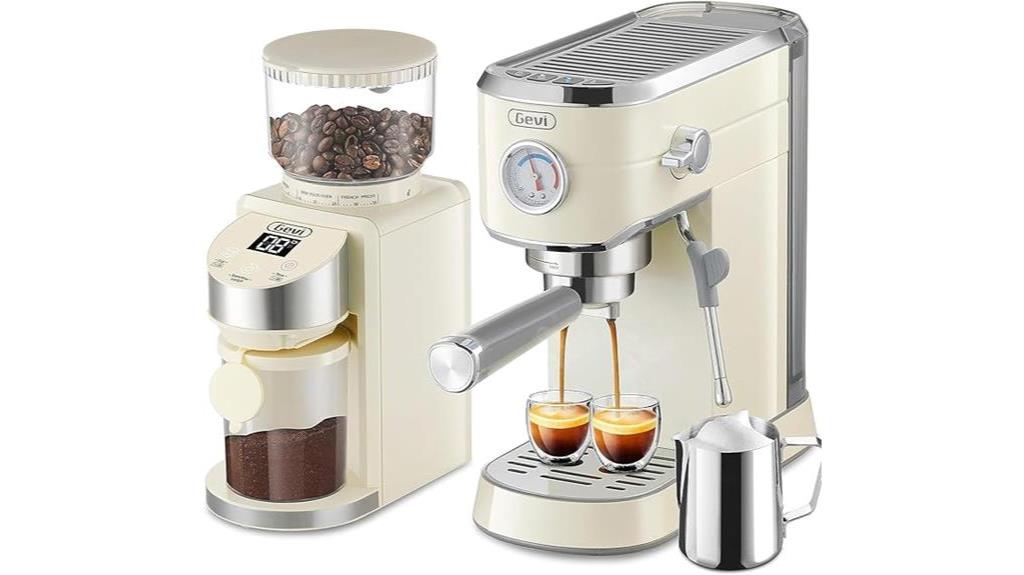
 Espresso Machines Reviews3 weeks ago
Espresso Machines Reviews3 weeks agoGevi Burr Coffee Grinder Review






